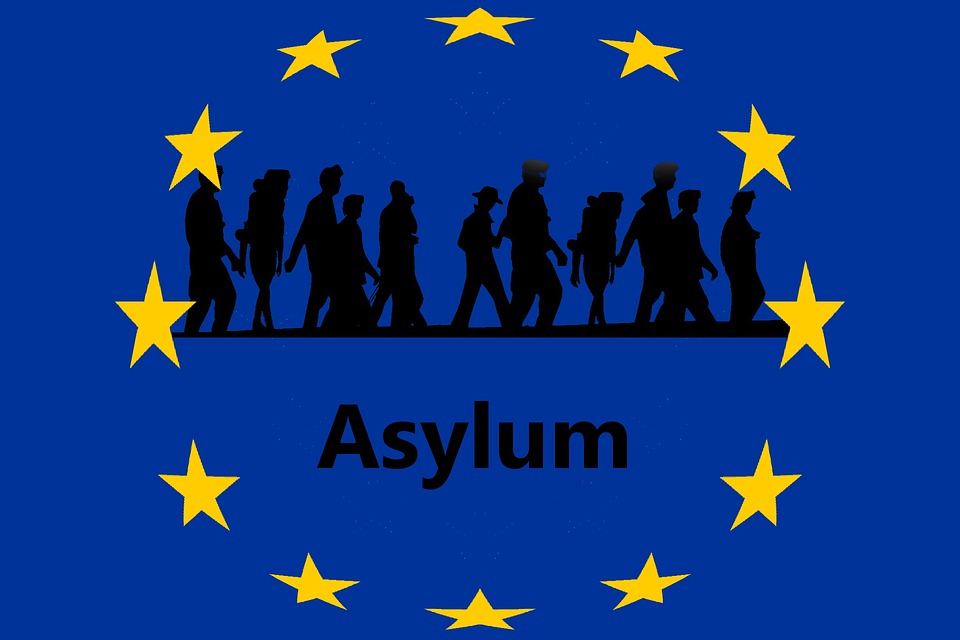By Catherine Wihtol de Wenden
Translation: Lawrence Myers
Passage au crible n° 132
 Source: Pixabay
Source: Pixabay
In 2014, the EU received 625,000 asylum seekers, a figure not seen until then. Previously, the yearly number remained around 200,00 applications. In 2015, 300,000 people from around Europe (Libya, Syria, Iraq, the Horn of Africa) were forced to migrate due to the chaos facing their countries. Besides these facts, the drowning deaths of two thousand people at the borders of Europe are also deplored. Yet, the data continues to worsen. Between 2000 and 2015, an estimated 30,000 people perished in the Mediterranean. The overall number since 1990 stands at 40,000. At the same time, Angela Merkel’s speech in September 2015 was an unprecedented turning point. The German Chancellor announced that Germany was ready to host 800,000 asylum seekers in the coming months. For their part, French President François Hollande and the President of the European Commission, Jean-Claude Junker, are calling for the creation of a permanent and compulsory system of reception of asylum applications in all European Union member states according to each country’s population and resources.
> Historical background
> Theoretical framework
> Analysis
> References
Historical background
The European asylum policy based on the 1951 Geneva Convention defines a refugee as a person fleeing persecution or experiencing legitimate fears. This condition being met, he or she may then apply for a home in a host country. The right to asylum is a universal right that only fifty countries have not yet accepted. But given the diversity of responses of European powers, the EU is continuing to seek to harmony on this topic.
The first instruments of harmonization were used during the first asylum crisis in Europe after the fall of the Iron Curtain. At the time, 500,000 asylum applicants were sent to the European Union (including 432,000 in Germany in 1992). At that time, there was a struggle against “asylum shopping” where applicants made requests to various members of the Union pending on the response from the highest bidder. From now on – and this was at stake during the 1990 Dublin agreements – one single application is acceptable for treatment and response from all EU states. The same goes for the acceptance or refusal of granting refugee status. Since applications were addressed to Germany and Austria during this period, they have requested a sharing of the “burden”. This finally resulted in the Dublin II agreement in 2003. Itself based on the “one stop, one shop” principle. In this case, this means those concerned must now seek asylum in the first European country where they arrive. However, this logic has led to a backlog of applications on state territories located along the external borders of Europe, such as Italy and Greece, poorly equipped to cope with the influx of refugees. In addition, these states have a lesser culture of asylum, unlike Germany or Sweden. Newcomers have sought to leave, firstly avoiding the stamping of their passport. Doing so has kept them from being inevitably sent back to their first country of arrival. Such regulation has brought many locations to a point of saturation; including Athens or Calais and Sangatte in France. Applicants awaiting asylum in the United Kingdom are camping out in these two French cities.
In 2008, the European Pact on Immigration and Asylum (which is not a treaty) stated, among its five principles, the harmonization of European asylum law. It is in this spirit that an office in Malta was created, to harmonize the answers based on applicants’ profiles. A list of safe countries as well as other areas of safety under the control of non-state organizations, and a notification of clearly unfounded applications has therefore passed between members of the Union. This is a state of affairs that has come to restrict all chances for obtaining refugee status. But the Arab revolutions of 2011, the Syrian, Libyan and Iraqi crises combined with the arrival of many Afghans, eventually rendered the Dublin II regulation meaningless. A new, more tolerant practice then allowed the circulation of asylum seekers towards territories where they wanted to go. It also offered more flexibility in determining the processing and application country, depending on the applicant’s choice and its links with a particular European region. This turnaround recently mentioned by Angela Merkel will without a doubt lead to the disappearance of the Dublin II regulation.
Therefore, we note that 2014 and 2015 saw an exceptional influx of asylum requests. Faced with this challenge, the quota proposal made by the European Commission, which was initially snubbed in June 2015, was then followed by a compulsory system. It has now led to a new line between two groups of Europeans. On the one hand, those who accept to welcome refugees, and on the other hand, those who refuse the imposition of such measures such as the Central and Eastern European States, the United Kingdom, Ireland and Denmark.
1. Asylum confronted with the influx of Syrians. Should the Geneva Convention still be respected terms of assessing the individual character of an asylum seeker’s profile and the persecution that he or she has gone through or that she or he is fleeing? Should we not make a collective response adapted to this group of people of whom six million have fled their homes since 2011 and four million are abroad today? Some countries have already agreed to host millions of Syrians. They primarily include Turkey: 1.8 million; Lebanon: 1,200,000; and Jordan: 600,00. In other words, the urgency of this crisis does not require an exceptional response to an exceptional situation, as was the case in the past for the Vietnamese, Cambodian and Laotian boat people, between 1975-1980? There is also the question pertaining to the sovereignty of European countries. Many are having trouble accepting that asylum seekers are imposed on them. Mechanisms such as temporary protection, based on the European directive of 2001, could be applied, as in the past for citizens of the former Yugoslavia. However, these provisions are not part of the proposed solutions.
2. The harmonization of asylum in the European Union. In this political community, each country sets up its own diplomacy. Each has a special relationship with a particular country of origin and whether it maintains its tradition of asylum, given the low visibility of the Union’s common policy. Yet, asylum seekers often have a clear idea of the country where they want to go, for reasons of language, family ties, employment opportunities and benefits. Therefore, the idea that member states would all be seen as similar to them remains purely a pipe dream. In this context, the public opinion on the extreme right has long held that the practice of responding to European countries by affirming their policies here and there without restrictive nuances, exploits this issue which is in the service of migration security policies.
The asylum crisis that Europe is currently facing shows that deterrence has reached its limits. Although over the past 25 years it has been the strategy of choice and has seen the continual sophistication of its instruments, this strategy has not reduced regular and irregular entries or lessened the number of requests for asylum. Rather, it emphasizes the existing lines that are currently dividing Europe, between countries in the East and those in the West. Thus, this situation reveals the hostility of the new EU members from the communist bloc. It also renews the disparities between the North and the South. These differences are illustrated by the lack of solidarity between northern European countries – little affected by the arrivals in southern Europe – and states like Italy and Greece. So far, the latter have welcomed the bulk of those arriving. This we saw in Italy with Operation Mare Nostrum, implemented between November 2013 and November 2014. Ultimately, withdrawal wins out on account of EU solidarity principles. However it must be understood in this connection that Europe places its values on this human rights issue and on the shared responsibilities in the decision to welcome – or not to welcome – refugees.
Höpfner Florian, L’Évolution de la notion de réfugié, Paris, Pédone, 2014.
Vaudano Maxime, « Comprendre la crise des migrants en Europe en cartes, graphiques et vidéos », LeMonde.fr, [En ligne], 4 sept. 2015, disponible à l’adresse suivante : http://www.lemonde.fr/les-decodeurs/article/2015/09/04/comprendre-la-crise-des-migrants-en-europe-en-cartes-graphiques-et-videos_4745981_4355770.html. Dernière consultation : le 17 sept. 2015.
Wihtol de Wenden Catherine, La Question migratoire au XXIe siècle. Migrants, réfugiés et relations internationales, Paris, Presses de Sciences Po, 2013.




